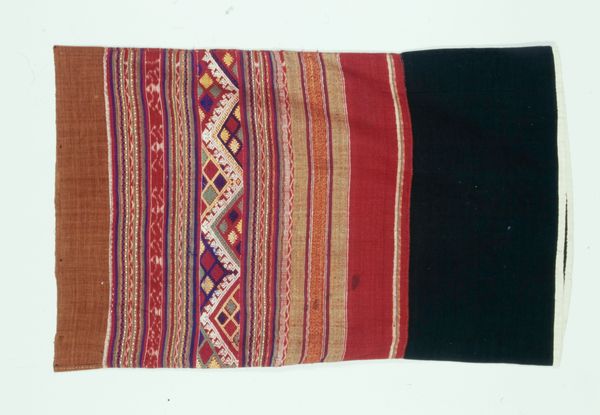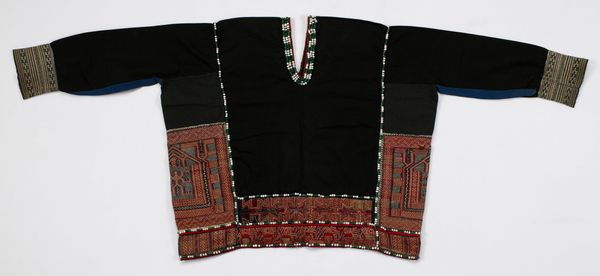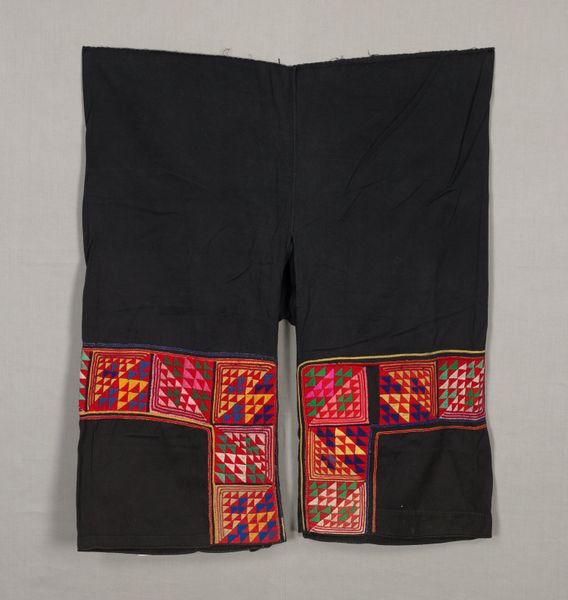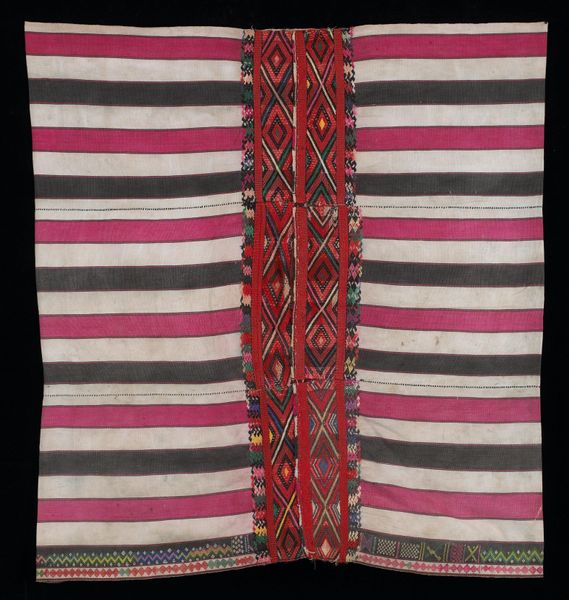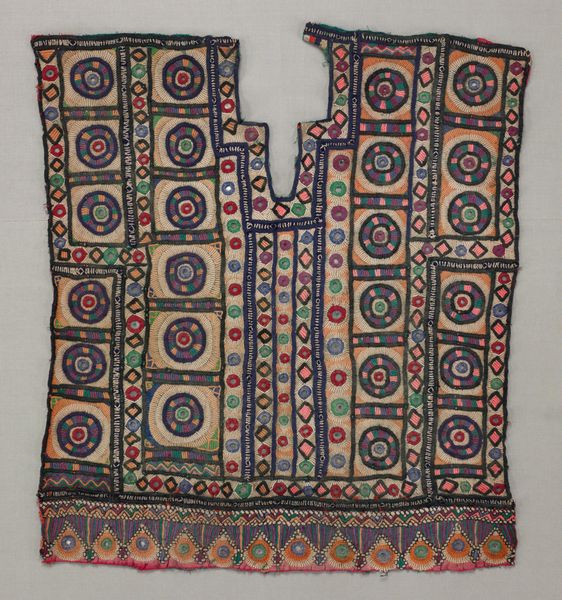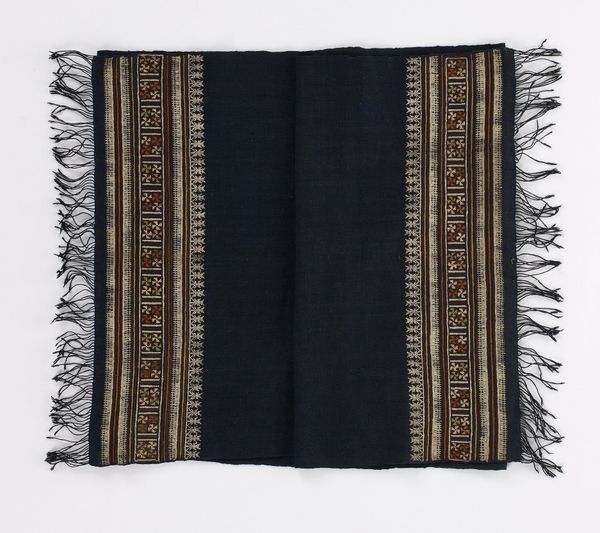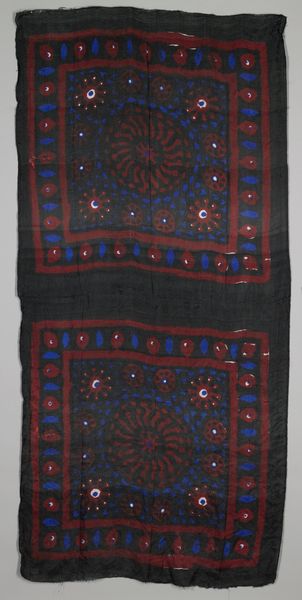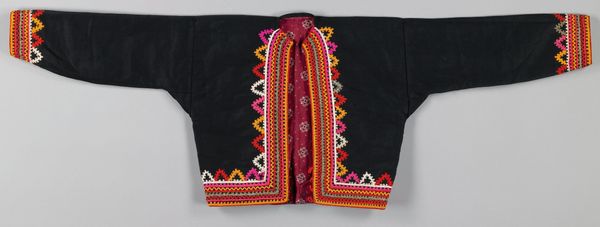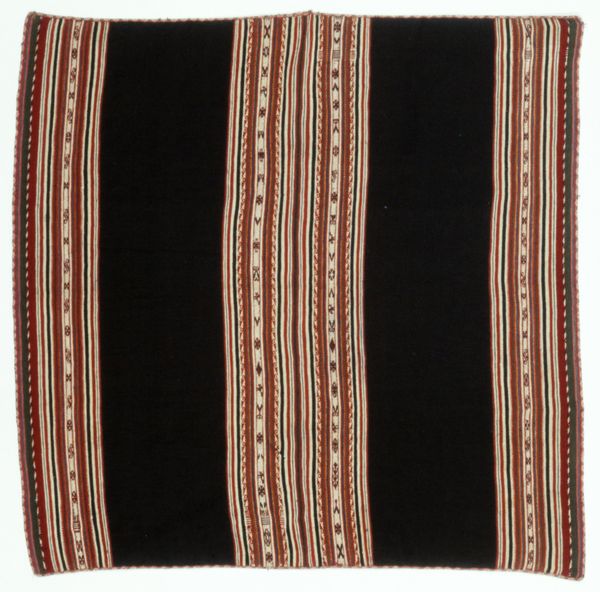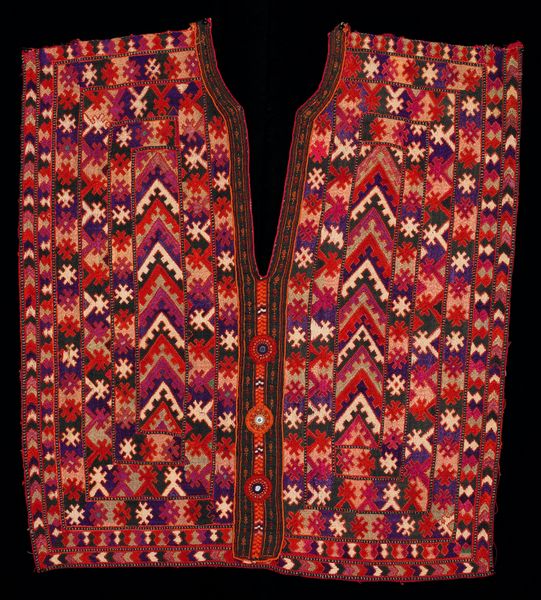
fibre-art, textile, cotton
#
african-art
#
fibre-art
#
textile
#
cotton
Dimensions: 16 3/4 x 17 in. (42.5 x 43.2 cm)
Copyright: Public Domain
Editor: Here we have a tunic, a fibre art piece from the Wodaabe people dating from the 20th century, currently residing here at the Minneapolis Institute of Art. The material looks like cotton, maybe even indigo dyed. I'm struck by the linear designs and how much texture there is in the stitching, despite the simple palette. How do you read this visually? Curator: I'm immediately drawn to the recurring motifs, the careful arrangement of those vibrant embroidered stitches. Think of these not just as decorative elements, but as potential visual language. The creators are preserving memories, identities, histories. What might these forms have represented, or evolved from, in Wodaabe culture? Do they connect to ideas of status, beauty ideals, or even protection? Editor: So, each shape is potentially a symbol carrying meaning for the wearer or the community? Like a family crest? Curator: Potentially, yes. More broadly than heraldry perhaps. Consider that the act of creation, the repetitive stitching itself, is an act of cultural continuity. The women are not just making a garment, they are reinforcing identity through repeated action, maintaining ties to ancestors. Is this piece also conveying something about a very specific moment, a ritual event perhaps? Editor: I didn't even think about the act of making. Now that you point that out, there's a quiet sort of strength that echoes in the repetitive, geometric pattern. Almost like a meditation made material. Curator: Exactly! These are echoes of deeper meaning, constantly revisited and re-expressed in the material world. Are those white dashes a stylised river, or a cloud? Editor: It could be so many things. The tunic feels alive, a keeper of knowledge passed down through generations of artists. Curator: And we become interpreters of those stories when we encounter pieces such as these. Every viewing reveals a bit more.
Comments
minneapolisinstituteofart about 2 years ago
⋮
The Wodaabe are one of the few remaining nomadic peoples in Africa. Using traditional patterns and adhering to a common cultural aesthetic, they create colorful, richly embroidered garments that are worn at feasts and dances that take place during the rainy season. Both men and women may design and embroider their costumes, but it is primarily women who practice this art form. Variations of chain stitch and feather stitch are used to create intricate, repetitive patterns that are designed around a symmetrical axis. The patterns are handed down from one generation to the next and have names that refer to aspects of their nomadic life, such as calf-rope, winding road, star in the evening sky, or encampment.
Join the conversation
Join millions of artists and users on Artera today and experience the ultimate creative platform.

